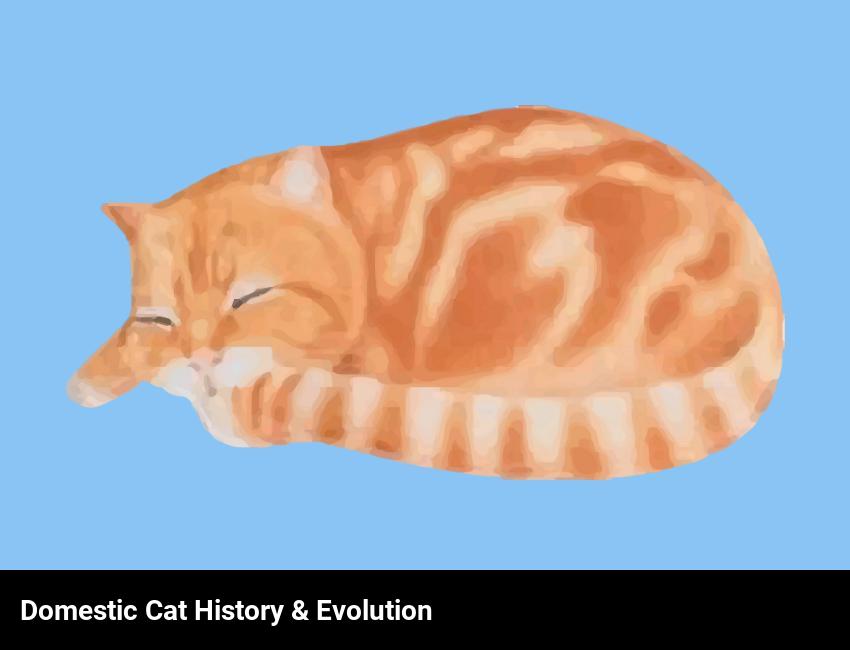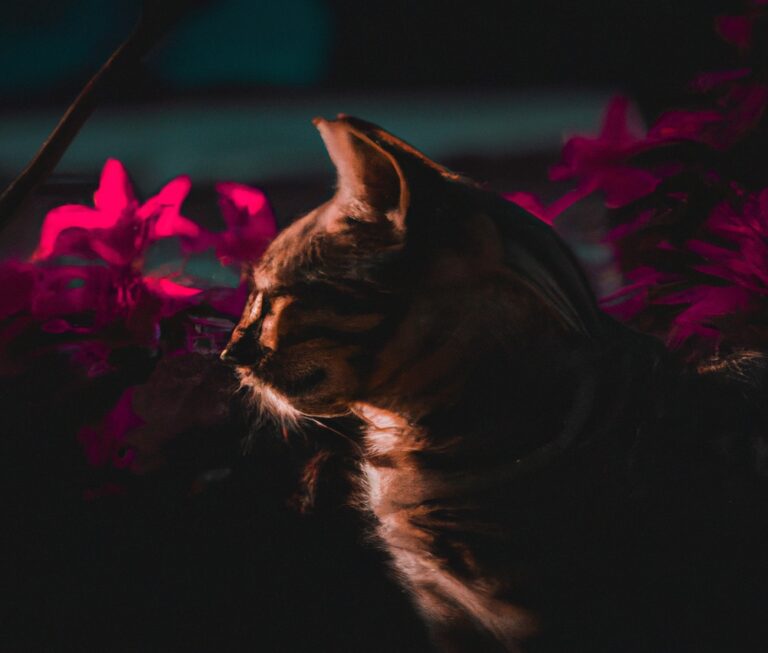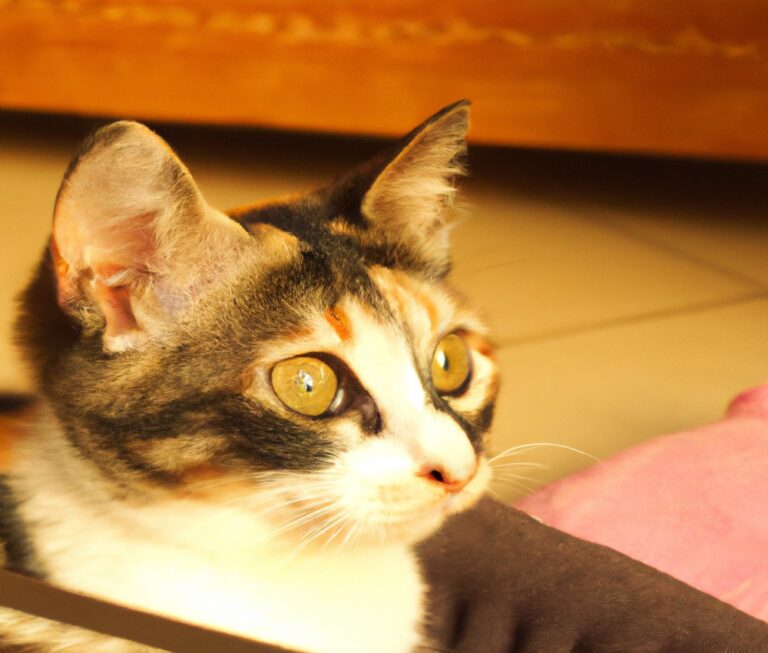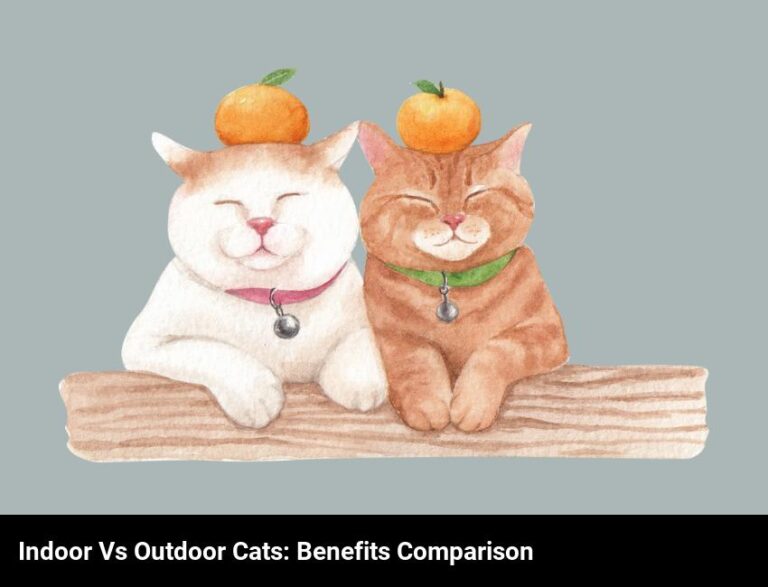The History And Evolution Of Domestic Cats
Domestic cats have been around for thousands of years, originating from their wild ancestors. They were first domesticated in the Middle East and have since spread around the world, becoming popular household pets. Over time, cats have evolved to have longer lifespans, become more tolerant of human contact, and have developed various breeds.
I have always been fascinated by cats, so when I had the opportunity to research the history and evolution of domestic cats, I was thrilled! I was curious to see how the domestication of cats has evolved over time, and to find out more about the breeds of cats that exist today.
My research journey began by studying the origin of domestic cats. I was intrigued by the timeline of their evolution, and the different breeds that developed over time. I was amazed by how these breeds have changed and adapted to their environment and human culture. I also discovered the unique characteristics that different breeds of cats possess, and how these characteristics have been passed down through generations.
As I continued my research, I found myself more and more amazed by the history and evolution of domestic cats. I’m excited to share my findings with you and explore how the domestication of cats has impacted human culture.
What is the origin of domestic cats?
Have you ever wondered where domestic cats came from? The answer is both fascinating and elusive. Domestic cats, or Felis catus, are believed to be descended from the African wildcat, Felis silvestris lybica. This wildcat was first domesticated in the Fertile Crescent, some 12,000 years ago.
It is thought that cats were domesticated to help with rodent control in the early days of agriculture. Their skills as a predator and their independent nature made them ideal partners to humans. As the human population grew, so did the cat population, and cats began to spread across the world.
The first documented evidence of cats living alongside humans comes from ancient Egypt in the 4th millennium BCE. It is believed that Egyptians kept cats as domestic pets, and even kept them in temples and mummified them after death.
Today, cats are one of the most popular pet species in the world, and have been for many centuries. They can be found in almost every country, and come in a variety of shapes and sizes. Despite their domestication, cats still retain many of their wild instincts, which makes them great hunters and explorers.
Domestic cats are believed to have descended from the African wildcat, and have been domesticated by humans for thousands of years. While they have come a long way since their wildcat ancestors, cats still retain many of their wild instincts, making them one of the most beloved pet species in the world.
What is the timeline of the evolution of domestic cats?
The domestication of cats is thought to date back over 9,000 years. It is believed that cats were first domesticated in the Fertile Crescent, the region that is now modern-day Iraq and Syria. Wild cats initially lived in close proximity to humans and were attracted to the food and shelter they provided.
Over time, cats and humans developed a mutually beneficial relationship. As cats began to be bred in captivity, they developed into the cats we recognize today. During the Middle Ages, cats were prized possessions and were used to hunt rodents and other pests.
In the 18th century, cats began to be bred for specific desired traits. This resulted in the development of the first cat breeds. By the 19th century, cats were established as popular household companions and were being bred for appearance and temperament.
Today, there are over seventy registered cat breeds ranging from the Maine Coon to the Siamese. All of these breeds are believed to have descended from the wildcats that were first domesticated over 9,000 years ago.
What are the different breeds of domestic cats?
Domestic cats come in a wide variety of shapes and sizes, from the small and petite to the large and powerful. The most popular domestic cat breeds include the Persian, the Maine Coon, the British Shorthair, the Bengal, the Ragdoll, the Siamese, and the Abyssinian.
The Persian cat is one of the oldest breeds and is known for its long, luxurious coat and playful personality. This breed is gentle and affectionate, making them a great pet for families with children.
The Maine Coon is one of the largest domestic cat breeds and is known for its gentle, friendly nature. This breed has a thick, luxurious coat, large ears, and wide eyes. They are very intelligent and loyal, making them a great companion.
The British Shorthair is a medium-sized, stocky cat with a short, dense coat and a round face. This breed is known for its laid-back personality and is a great choice for those who live in small apartments.
The Bengal is a hybrid breed created by crossing a domestic cat with an Asian Leopard Cat. This breed is known for its intelligence and active, playful nature. They are very energetic and love to explore, making them a great choice for active owners.
The Ragdoll is a large, laid-back breed with a thick coat and a docile, loving nature. This breed is known for its gentle, affectionate personality and is a great choice for families with children.
The Siamese is a medium-sized breed with a sleek coat and a distinctive pointed pattern. This breed is known for its intelligence and active nature. They are very vocal and love to explore, making them a great choice for active owners.
The Abyssinian is a medium-sized breed with a short, dense coat and an athletic build. This breed is known for its intelligence and active, playful nature. They are very curious and love to explore, making them a great choice for active owners.
No matter what breed of domestic cat you choose, you’ll be sure to find a loyal and loving companion. With so many breeds to choose from, you’re sure to find the perfect cat for your lifestyle and personality.
How have these breeds changed throughout history?
Domestic cats have come a long way! From the wild felines of the Middle East, domestic cats have evolved and been bred over thousands of years to develop the breeds that we know and love today.
The first recorded domestication of cats dates back to ancient Egypt in 4,000 B.C. From the start, these cats were bred for their specific appearances and personalities. The Egyptians had a special appreciation for cats and saw them as symbols of grace, beauty, and power. This led to the breeding of cats that were bigger and more docile, resulting in the Maine Coon, the first true domestic breed.
Since then, many other breeds have been developed, especially in the last century. Some of the most popular breeds today, such as the Siamese, Persian, and British Shorthair, were developed in the 1800s by British and European breeders. More recently, in the 20th century, American breeders have developed their own unique breeds, such as the Ragdoll, the Bengal, and the Cornish Rex.
These breeds have been carefully crafted over time to produce cats with very specific qualities. For example, some cats are bred for their intelligence, agility, and curiosity (like the Bengal), while others are bred for their docility and affectionate nature (like the Ragdoll). Each breed has its own unique traits and characteristics that make it stand out from the rest.
Today, there are over 40 recognized breeds of domestic cats, including a few that were recently developed in the 21st century. Domestic cats have come a long way in terms of physical appearance, temperament, and size. The cats of today are very different from the wild felines of ancient Egypt, but their appreciation and adoration by humans remains unchanged.
What unique characteristics do different breeds of cats possess?
Cats come in an incredible range of breeds, each with its own unique characteristics! Whether you’re looking for a playful companion, a friendly lap cat, or a fiercely independent hunter, there’s a breed out there that fits the bill.
Siamese cats, for example, are known for their intelligence and playful personalities. They love to be part of the family and are incredibly vocal – they’ll happily have a conversation with you! They’re also known to be quite mischievous, so they’ll need plenty of stimulation to keep them entertained.
Persians, on the other hand, are known for their more relaxed and gentle demeanors. They enjoy a good snuggle and make wonderful lap cats. They’re also known for their luscious coats, which require regular grooming.
If you’re looking for an independent hunter, the Bengal might be the breed for you. An active breed, Bengals love to explore and hunt, and their wild side means they make excellent indoor cats. Though they can be quite vocal, they make wonderful companions once they’re comfortable in their home.
No matter what breed of cat you choose, they’ll bring unique and wonderful characteristics to your home. Be sure to do your research and find the breed that best fits your lifestyle.
How has the domestication of cats affected human culture?
Domestic cats have had an enormous effect on human culture from Ancient Egypt to the present day. From being revered as gods to becoming beloved household pets, cats have been an integral part of our lives for centuries.
The domestication of cats dates back thousands of years, with the first recorded evidence being found in Ancient Egypt. Cats were worshipped as gods, and it was believed that if you hurt a cat, you were cursed with bad luck. In Ancient Greece, cats were seen as a symbol of freedom and independence, while in Rome, they were used to hunt rodents and snakes.
In the Middle Ages, cats were seen as a symbol of witchcraft and evil. It was believed that cats were associated with the devil, and they were often killed on sight. In the Renaissance, cats were considered more positively. They were still seen as mysterious, but they were also appreciated for their ability to hunt rodents and keep homes clean.
Today, cats are still beloved by many. They are kept as pets and provide us with companionship and joy. They also have a role in popular culture, with many movies, books, and TV shows featuring cats as major characters.
In conclusion, the domestication of cats has had a huge impact on human culture. From Ancient Egypt to the present day, cats have been revered, feared, and loved. They have a special place in our hearts and in our homes, and their influence can be seen in all aspects of our lives.

Frequently Asked Questions
What are some of the unique ways cats have adapted to living with humans?
Cats have adapted to living with humans in many unique ways. They have evolved to have a more mellow temperament, better social skills and the ability to bond with humans. Cats also have a better sense of smell and hearing than humans, which helps them pick up on subtle cues that humans may not notice. They can even recognize the sound of their owners’ voices and respond to them. Cats are also very independent and have the ability to take care of themselves, which makes them great pets.
How have cats been depicted in different cultures throughout history?
Cats have been depicted in various ways throughout history, depending on the culture. In ancient Egypt, cats were revered as gods and were depicted in hieroglyphs, sculptures, and paintings. In medieval Europe, cats were associated with witchcraft and were depicted in a negative light. In some cultures, cats are seen as symbols of good luck, and in Japan, they are often seen as symbols of loyalty. In today’s culture, cats are often depicted in a playful and affectionate manner.
What is the most unusual trait of a domesticated cat?
The most unusual trait of a domesticated cat is their ability to bond closely with humans. Domesticated cats have evolved to seek out human companionship and respond to us in a way that wild cats never do. They are also incredibly intelligent and can even be trained to do tricks. Domestic cats are social creatures and will often meow or purr when they’re around people they trust.







